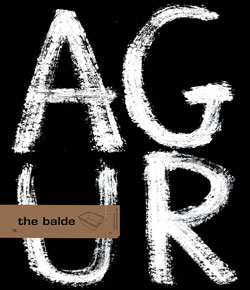
napumoceno da silva araujo jaunaren testamentua
germano almeida-itzul/ trans: bego montorio · txalaparta, 2002
We’ve heard it said by a poet that poetry is like picking up the pieces once you’ve hit rock bottom. The basis of this Cabo Verde poet’s work, therefore, will come as no surprise to us. This book tells the story of a second (or third) life that has been hidden away. Even though it’s fiction, it’s as valid and believable as a testament. This book shows us that not everything is as it seems. Germano Almeida writes with irony of life, of everyday life in Cabo Verde. Everyday life hides its secrets from us, it brings faults, virtues and other secrets to the fore, things that everybody harbours. The reader recreates the character of Napumoceno da Silva Araujo from the traces he leaves behind in the testament. This book follows on from the recently adopted book by director Francismo Manso and European readers have been quick in showing their appreciation. Txalaparta must be thanked for giving us the opportunity to read the book in Basque. The reader creates Napumoceno from clay and ashes and will feel like God in the Bible, happy in the warmth of Mindelo. Not a bad choice for winter.

zorrotz begiratutako trenak
bohumil hrabal -itzul/trans: fernando rey · alberdania & elkar, 2002
This winter gone saw the final book in part of the Universal Winter Collection by publishing companies EIZIE and Ibaizabal. That book was none other than Shakespeare’s “Hamlet”. We say "part of" because the Universal Literature Collection carries on, albeit in different form and presentation. The two publishers, Alberdania & Elkarlanean, have taken the job of working on and translating new books upon themselves. Book 101 – number 1 in the new series – is by Bohumil Hrabal from Moravia. The book is called “Zorrotz Begiratutako Trenak”. Bohumil is more known to us for his work in cinema than he is for his writing. The film version of this book won an Oscar in 1967. The main characteristics of the writing in this book are dark irony and harsh crudeness. The book begins with the rubble-filled landscape of war and, as in the comings and goings of trains, moves onto describe words, dialogues and incidents. We haven’t smiled such terrible smiles of complicity since Agota Kristof’s “Koaderno Handia”. The author observes everyday life in the same manner he watches trains. You won’t regret choosing this book.


